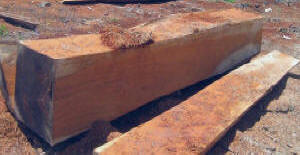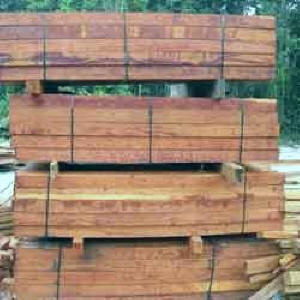|
|
Mora Hardwood Lumber
Wood Appearance - Mora heartwood varies from chocolate-brown to reddish brown. Sapwood has yellowish to pale brown color. The grain is straight to commonly interlocked, very variable and often has attractive birdís-eye, wavy, or sometimes ribbon-grain figures.
Physical Properties - Mora is a very heavy and very hard wood. It has outstanding strength properties, and is particularly resistant to wear.
Natural Durability - Mora heartwood is a durable timber. Mora is susceptible to damage by marine borers, but very resistant to dry-wood termites and other insects. Mora is also remarkably fire resistant.
Timber Processing - Mora is difficult to season. Drying must be slow and carried out in a careful manner because of risk of distortion and checking.
Working/Machining - Difficult to saw, because of its density and interlocked grain. With the same qualification it can be planed, easily turned, and splits with great difficulty.
Preservation - Extremely resistant to preservative treatments.
Assembly - Difficult to nail, but holds nails and rail spikes well. Preboring is necessary.
Finishing - Mora will finish smoothly. It will also stain and polish satisfactorily.
Uses - Being hard, tough, heavy, and strong Mora timber has many uses. Best suited for heavy construction work, jetties, bridge timber, house framing, bridge decking, heavy-duty industrial flooring, and planking. It is also particularly suitable for railroad cross-ties.
Availability - Very common in Guyana. Abundant and regular supplies assured.
|
|
|
|
||






